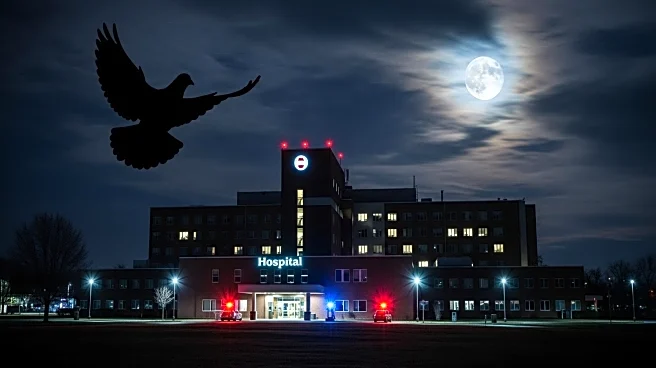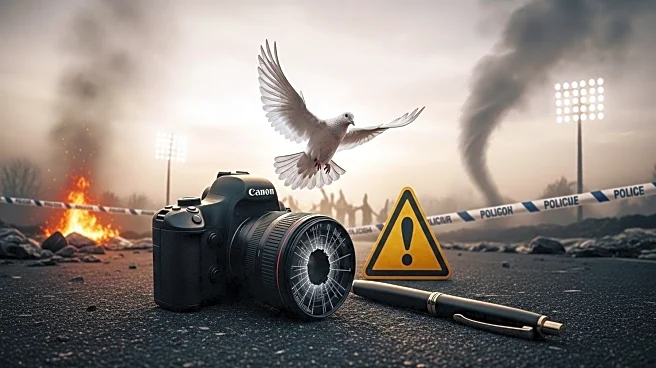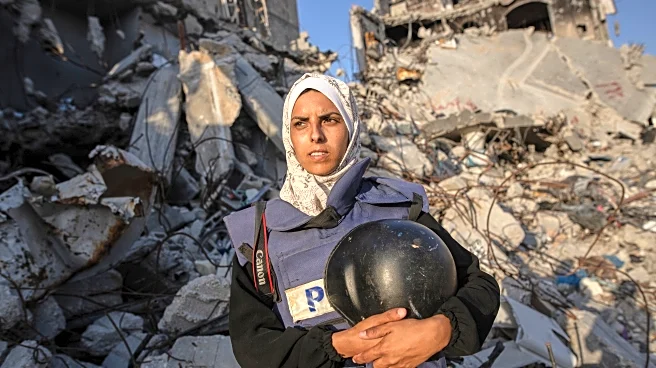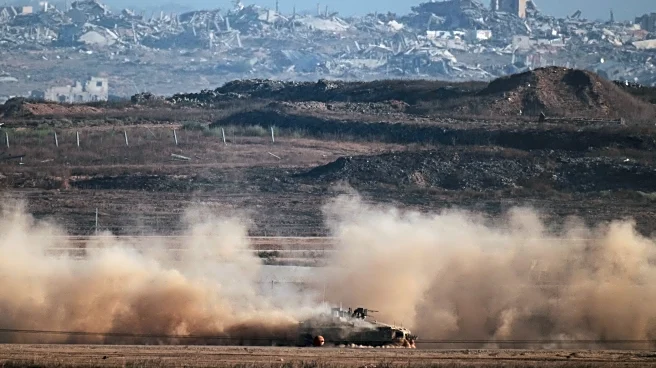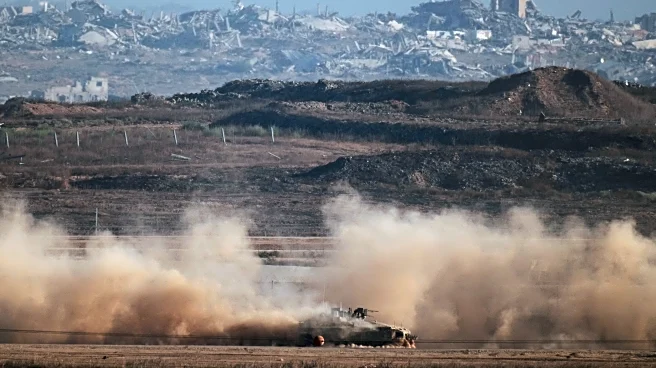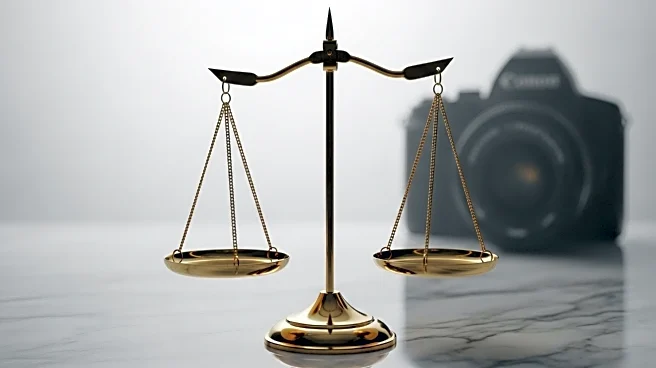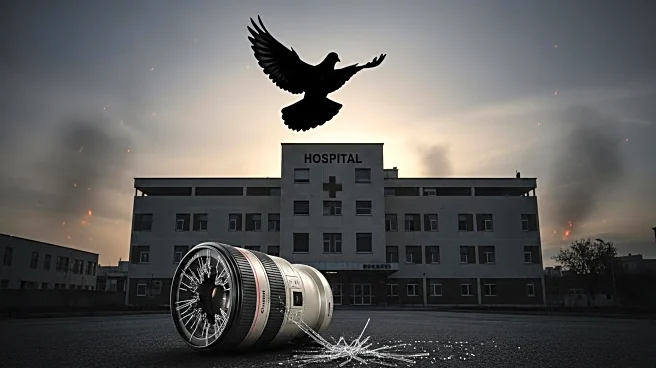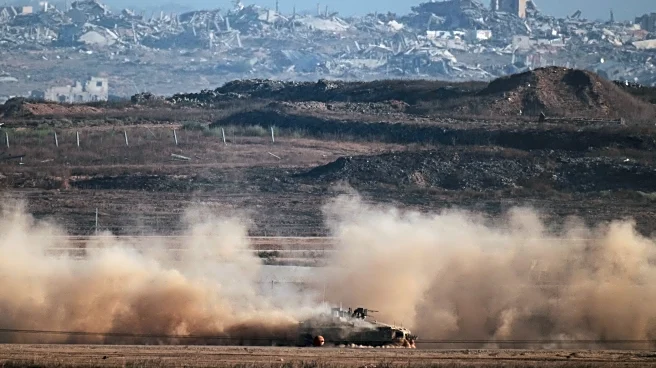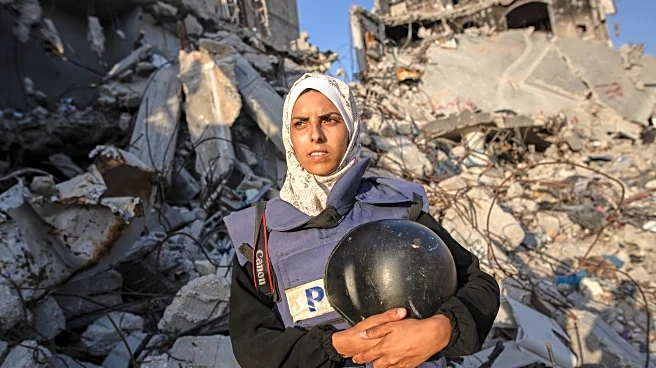What's Happening?
Mariam Dagga, a freelance visual journalist for the Associated Press, was killed in an Israeli military strike on Nasser Hospital in the Gaza Strip. The incident occurred on August 25, when Israeli forces targeted the hospital twice in quick succession, resulting in the deaths of 22 people, including five reporters. Dagga's last photos, retrieved from her camera, depict the damaged stairwell outside the hospital moments before the strike. The Israeli military claimed the target was a Hamas surveillance camera, but witnesses and health officials reported the casualties, including a Reuters cameraman.
Why It's Important?
The death of Mariam Dagga highlights the ongoing risks faced by journalists in conflict zones, particularly in the volatile region of Gaza. This incident underscores the dangers of reporting in areas where military operations are frequent and the lines between civilian and military targets can blur. The loss of journalists impacts the flow of information from these regions, potentially limiting global awareness and understanding of the situation on the ground. The targeting of media personnel raises concerns about freedom of the press and the protection of journalists under international law.
What's Next?
The international community may respond with calls for investigations into the circumstances surrounding the strike and the protection of journalists in conflict zones. Media organizations and advocacy groups are likely to push for stronger measures to ensure the safety of reporters and to hold accountable those responsible for attacks on press personnel. The incident may also influence diplomatic discussions regarding the Israel-Palestine conflict, with potential implications for future military engagements and humanitarian efforts in the region.
Beyond the Headlines
The ethical implications of targeting areas known to house journalists and civilians are profound, raising questions about the conduct of military operations and adherence to international humanitarian law. The cultural impact of losing journalists like Mariam Dagga, who document the human side of conflict, is significant, as their work often serves as a historical record and a catalyst for change. Long-term, this event may contribute to shifts in how media coverage is approached in conflict zones, emphasizing the need for enhanced safety protocols and international cooperation.




